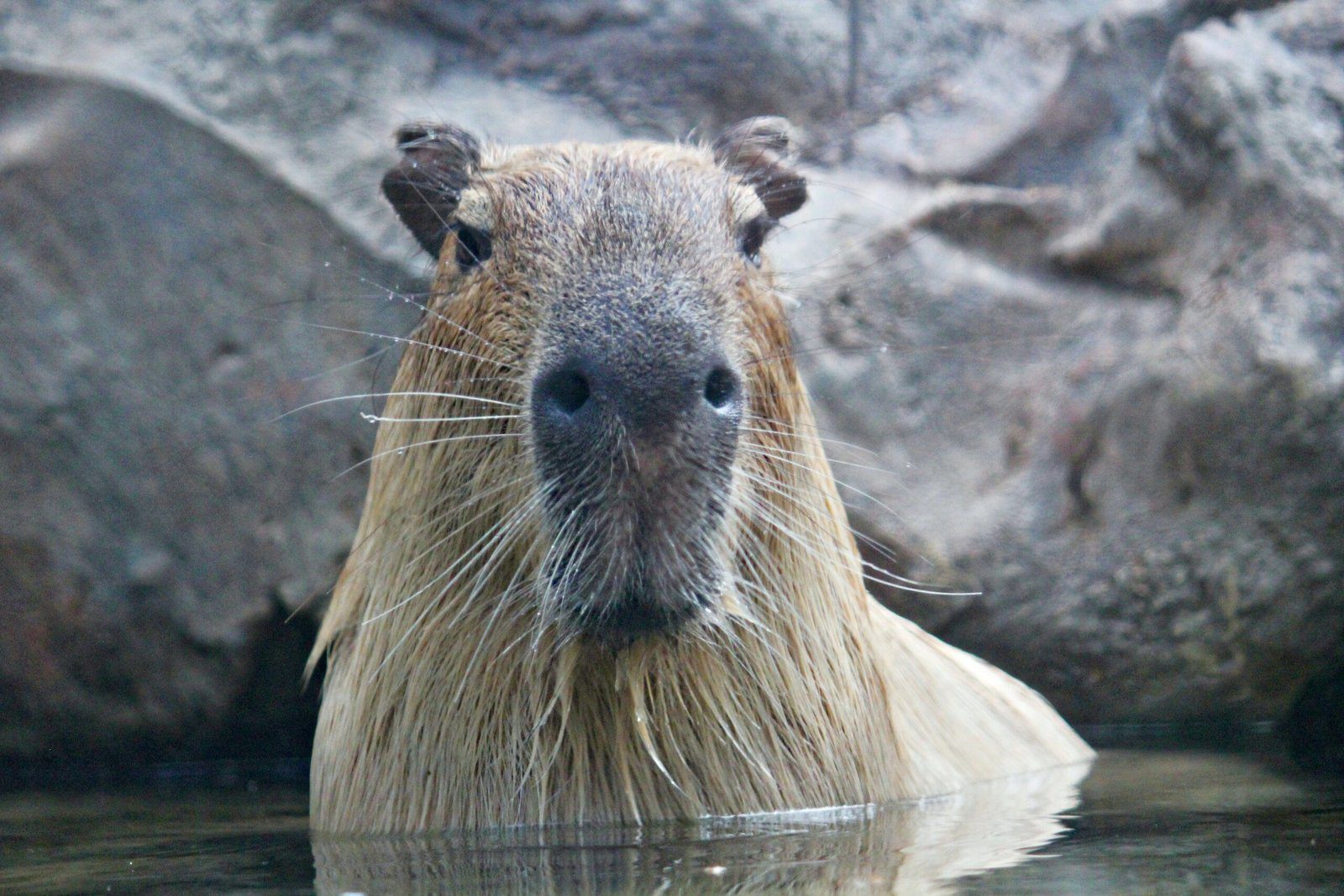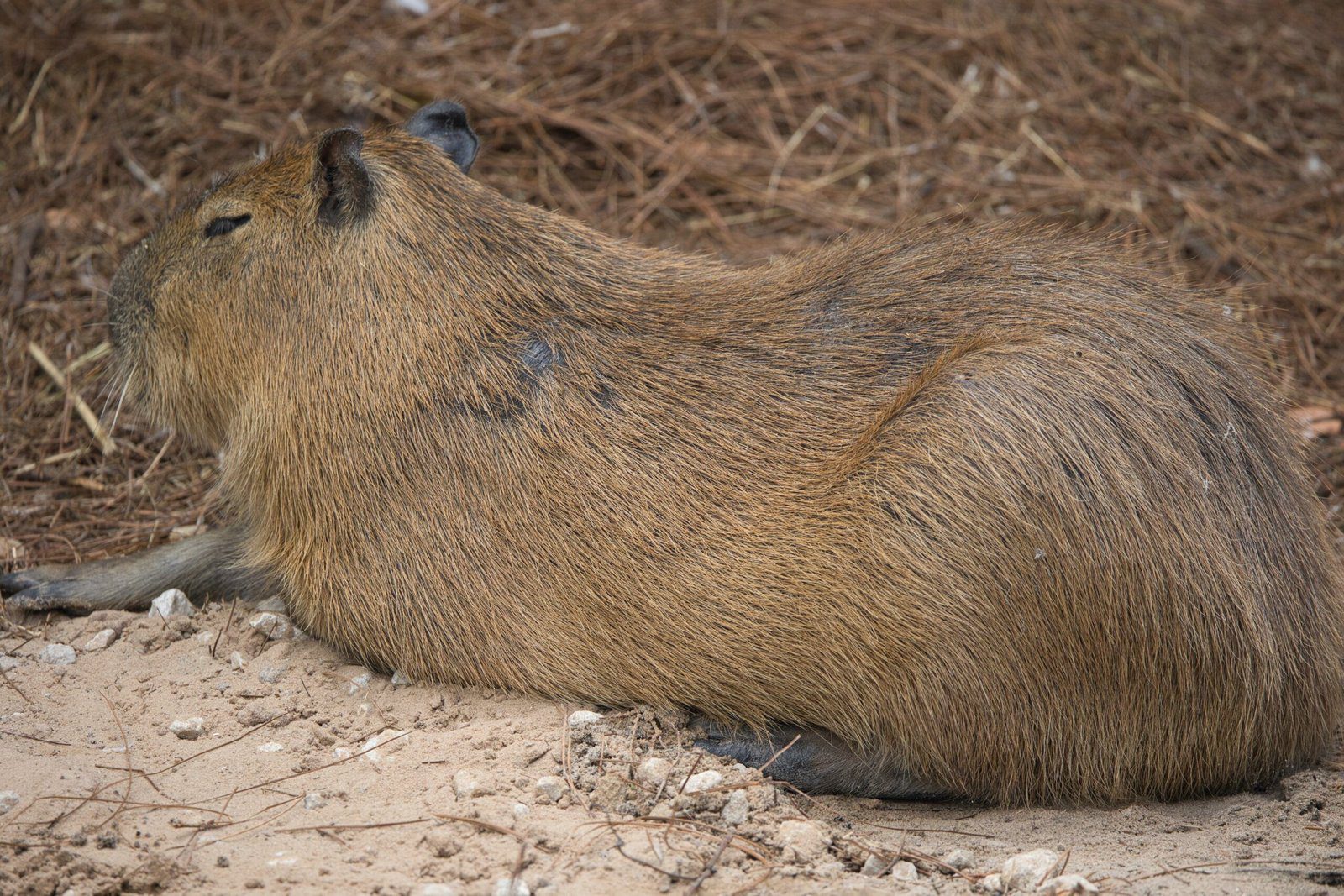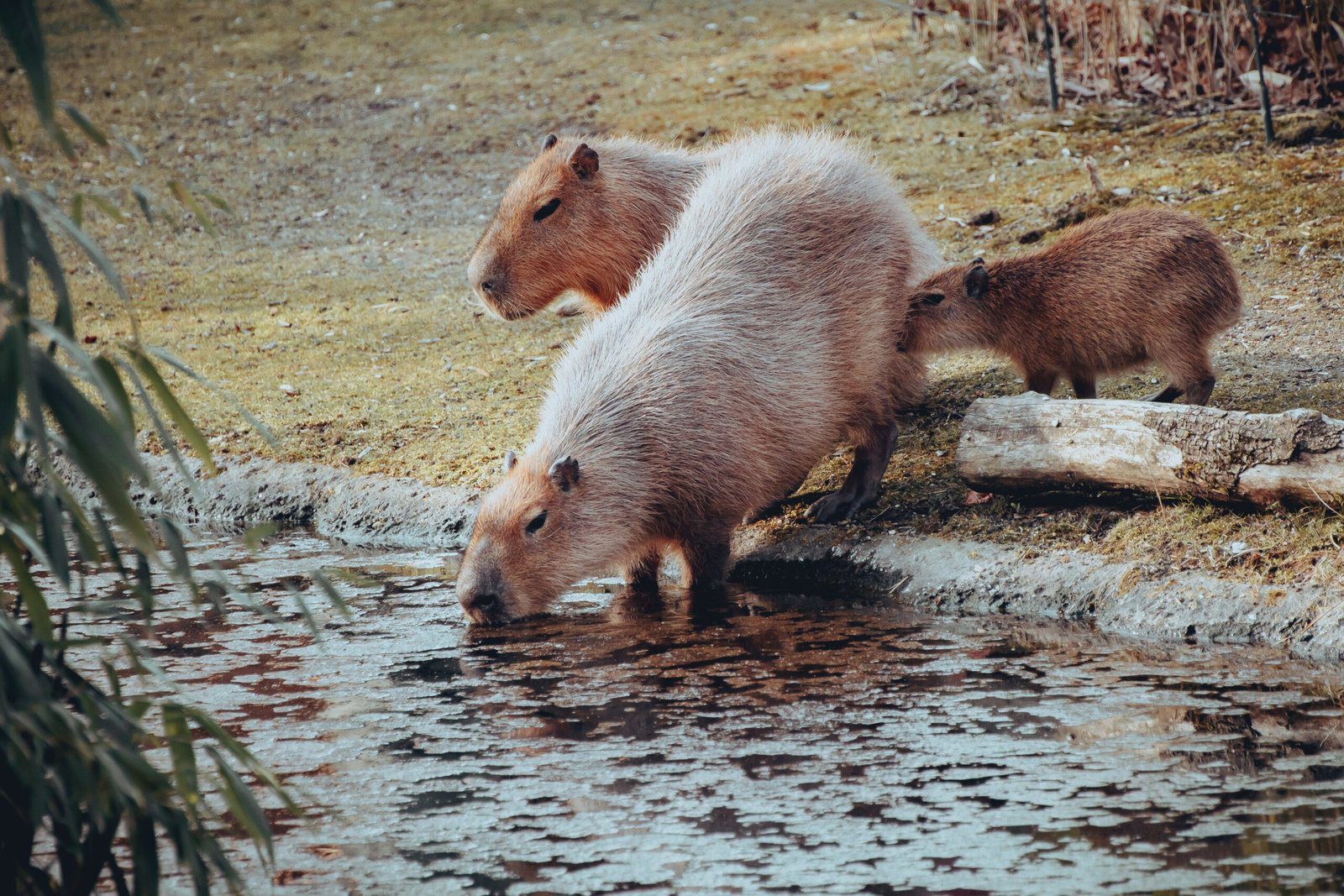Table of Contents
Capybaras, those charming creatures known for their semi-aquatic lifestyle and sociable nature, have a surprisingly long lifespan. Found mostly in South America, these lovable rodents can live up to 12 years in the wild, and even longer in captivity. From their diet of aquatic plants to their ability to swim with exceptional grace, capybaras continue to captivate our hearts as we explore the fascinating realm of their lifespan.

Factors Affecting Lifespan
When it comes to the lifespan of capybaras, there are several factors that come into play. Understanding these factors can provide insights into the longevity of these fascinating creatures.
Genetics
Just like humans, genetics plays a significant role in determining the lifespan of capybaras. Some individuals may inherit genes that predispose them to certain health conditions, while others may have a genetic advantage that allows them to live longer. While it is difficult to control or predict genetic factors, understanding them can help identify potential health risks and take appropriate measures.
Diet
A well-balanced diet is crucial for the overall health and longevity of capybaras. The food they consume directly impacts their well-being and plays a vital role in determining their lifespan. A poor diet lacking essential nutrients can lead to various health issues, lowering their chances of living a long and healthy life.
Habitat
The natural environment in which capybaras live can significantly impact their lifespan. Factors such as temperature, humidity, availability of resources, and the overall ecosystem play a crucial role in determining their overall health and well-being. Capybaras thriving in their natural habitat with an abundance of food and suitable living conditions are more likely to live longer lives.
Predators
In the wild, capybaras have natural predators to contend with. Predatory animals such as jaguars, alligators, and anacondas can pose a considerable threat to the lifespan of these gentle giants. The presence or absence of predators can greatly impact the survival rate of capybaras and their ability to live a full life.
Disease and Illness
Similar to any living creature, capybaras are susceptible to various diseases and illnesses. Factors such as exposure to parasites, viruses, and bacteria can impact their overall health and longevity. Capybaras with a strong immune system and access to proper veterinary care are better equipped to combat and recover from illnesses, increasing their chances of living a longer life.
Average Lifespan of Capybaras
When discussing the lifespan of capybaras, we can explore the typical lifespan of both wild and captive capybaras, as they provide valuable insights into their overall longevity.
Wild Capybaras
In their natural habitat, capybaras have an average lifespan of around 8 to 10 years. However, it is essential to note that various factors influence their lifespan, and individual capybaras may fall outside this range. Survival challenges, such as predation and limited access to resources, can significantly impact the lifespan of wild capybaras.
Captive Capybaras
When capybaras are kept in captivity, their lifespan tends to be longer compared to their wild counterparts. On average, captive capybaras live between 10 and 12 years, with some individuals even reaching 15 years or more. The controlled environment and access to a balanced diet and veterinary care contribute to their increased longevity.

Genetics
Understanding the genetic influences on lifespan is essential when considering capybaras’ overall well-being.
Influence on Lifespan
Genetics significantly influence the lifespan of capybaras. Just like humans, they can inherit certain genetic factors that predispose them to specific health conditions or enhance their ability to live a longer life. Scientists continue to study the genetic markers associated with longevity to gain a deeper understanding of how genetics impact capybaras’ lifespan.
Genetic Factors
Several genetic factors can affect the lifespan of capybaras. Some individuals may possess genes that make them more susceptible to certain diseases or conditions. On the other hand, certain genetic variations may provide them with enhanced resistance or resilience against potential health risks. Understanding these genetic factors can help inform breeding programs and promote healthier populations of capybaras.
Diet
The diet plays a crucial role in determining the lifespan of capybaras. A nutritionally balanced diet is essential for their overall health and longevity.
Impact on Longevity
A poor diet lacking essential nutrients can negatively impact capybaras’ health and decrease their lifespan. Nutritional deficiencies can weaken their immune system, making them more vulnerable to diseases and infections. On the other hand, a diet rich in the necessary nutrients can promote good health and increase their chances of living a longer, disease-free life.
Ideal Diet for Capybaras
Capybaras primarily feed on grasses and aquatic plants. Their diet should consist of a variety of vegetation to ensure they receive all the necessary nutrients. Additionally, capybaras require a sufficient intake of fiber to maintain a healthy digestive system. Providing a balanced diet that closely mimics their natural feeding habits is crucial for their overall well-being.
Common Dietary Issues
Improper nutrition and dietary issues can significantly impact the lifespan of capybaras. Overfeeding or offering an unbalanced diet can lead to obesity, which can lead to various health issues. On the other hand, underfeeding can result in malnutrition and weaken their immune system. Providing the right balance of nutrients is essential for optimal health and longevity.

Habitat
The natural environment in which capybaras reside can greatly influence their lifespan. The availability of resources and suitable living conditions play a vital role in their overall health and well-being.
Natural Environment
Capybaras inhabit a variety of environments, including marshes, swamps, and grasslands near bodies of water. Their semi-aquatic nature requires access to water sources for drinking and cooling down. The natural environment should provide ample grazing areas and shelter to accommodate their social groups and ensure their survival.
Effect on Lifespan
In their natural habitat with ideal conditions, capybaras have a greater chance of living longer lives. Access to abundant food sources, suitable shelter, and water for swimming and bathing contribute to their overall health and well-being. In contrast, if their natural environment lacks these necessities, their lifespan may be significantly reduced.
Availability of Resources
The availability of resources in their habitat directly affects capybaras’ lifespan. Limited food sources or competition for resources can lead to malnutrition and weaken their immune system, making them more susceptible to diseases. Additionally, a lack of suitable shelter and water sources can expose them to extreme weather conditions, adding further risks to their overall health.
Predators
Capybaras encounter various natural predators, which can have a significant impact on their survival rate and lifespan.
Natural Predators
In the wild, capybaras face threats from predators such as jaguars, caimans, and anacondas. These predators target capybaras as a food source, making survival a constant challenge. The presence or absence of these predators can greatly influence the lifespan of capybaras.
Impact on Survival Rate
The presence of predators can significantly impact the survival rate of capybaras. Areas with a higher concentration of predators may result in higher mortality rates and shorter lifespans for capybaras. Conversely, in areas where predators are scarce, capybaras stand a better chance of survival and living a relatively longer life.
Disease and Illness
Capybaras, like any other living creature, are vulnerable to various diseases and illnesses. Understanding the common health conditions they may encounter throughout their lifespan is important for their overall well-being.
Common Health Conditions
Capybaras can experience a range of health conditions, including parasitic infections, respiratory illnesses, skin issues, and dental problems. Tick infestations, respiratory infections, skin mites, and tooth decay are some examples of health issues that capybaras may face. Regular veterinary check-ups and prompt treatment are essential for maintaining their health and maximizing their lifespan.
Vulnerability to Diseases
Various factors can contribute to capybaras’ vulnerability to diseases. Stress, malnutrition, and compromised immune systems can make them more susceptible to infections. Additionally, external factors such as climate and habitat conditions can also impact their vulnerability to diseases. Proper care and attention, including implementing disease prevention methods, can help minimize their risk and promote longevity.
Role of Veterinary Care
Regular veterinary care is crucial for maintaining the health and longevity of capybaras. Routine check-ups, vaccinations, and preventive measures against common diseases can significantly improve their chances of living a healthy life. Prompt diagnosis and treatment of health issues are equally important in ensuring their well-being.
Wild Capybaras
When considering the lifespan of capybaras, understanding the range of years they typically live in the wild provides valuable insights into their longevity.
Lifespan Range
In their natural habitat, capybaras typically have a lifespan ranging from 8 to 10 years, though this can vary based on individual circumstances and environmental factors. Some individuals may live longer due to genetic advantages or favorable living conditions, while others may have shorter lifespans due to predation or limited resources.
Factors Influencing Longevity
Several factors influence the longevity of wild capybaras. The presence of predators, accessibility to food and water, and the individual’s ability to adapt to changing environments can all impact their overall lifespan. Adapting to threats and finding suitable resources are survival challenges that wild capybaras must navigate throughout their lives.
Survival Challenges
Wild capybaras face numerous survival challenges that impact their lifespan. The scarcity of resources, competition for food, and predation are constant threats they must contend with. Successfully overcoming these challenges allows them to live longer, while those that struggle to find resources or evade predators may have shorter lifespans.
Captive Capybaras
Capybaras kept in captivity tend to have longer lifespans compared to their wild counterparts. Various factors contribute to their increased longevity.
Lifespan Variation
Captive capybaras generally have a longer lifespan compared to those in the wild. On average, they live between 10 and 12 years, with some individuals reaching 15 years or more. In some cases, captive capybaras have been known to live well beyond their expected lifespan. The controlled environment, access to veterinary care, and a balanced diet all contribute to their increased longevity.
Effects of Captivity
The controlled conditions of captivity can positively impact capybaras’ lifespan. They are protected from natural predators and have access to consistent food and water sources. Additionally, they are often provided with shelter and proper veterinary care, which helps maintain their overall health and well-being.
Factors Enhancing Longevity
Captive capybaras have several factors working in their favor to enhance their longevity. Regular feeding and access to a nutritionally balanced diet promote good health and minimize the risk of malnutrition. Protection from predators eliminates a significant threat to their survival. Prompt veterinary care and regular check-ups allow for the early detection and treatment of potential health issues. All of these factors combined contribute to the longer lifespan of captive capybaras.
Influence of Human Interaction
Human interaction can have both positive and negative impacts on the lifespan of capybaras.
Hunting
In certain regions, capybaras have been hunted for their meat and fur. Excessive hunting can result in a decrease in their population and a shorter overall lifespan. Fortunately, awareness of the importance of conservation efforts has grown, leading to stricter regulations and a more sustainable approach to capybara hunting in many areas.
Habitat Destruction
With human expansion, the destruction and alteration of capybaras’ natural habitats have become a significant concern. Deforestation and urbanization can disrupt their access to resources and shelter, increasing their vulnerability to predation and disease. Efforts towards habitat conservation and minimizing human impact on their environments are crucial in promoting their longevity.
Rescue and Conservation Efforts
On a positive note, rescue and conservation efforts have emerged to protect capybaras and their habitats. Organizations and individuals work tirelessly to rescue injured or orphaned capybaras, rehabilitate them, and release them back into suitable environments. Conservation efforts aim to protect their natural habitats, ensuring their access to resources and shelter. These initiatives contribute to the preservation of capybaras and the promotion of their long and healthy lives.
In conclusion, the lifespan of capybaras is influenced by various factors, including genetics, diet, habitat, predators, and disease. Genetic factors play a significant role in their lifespan, determining their susceptibility to specific health conditions. A well-balanced diet is crucial for their overall health and longevity, while suitable habitat conditions provide resources for their survival. Predators pose a constant threat, impacting their survival rates, and disease can affect their overall well-being. Understanding and addressing these factors, along with responsible human interaction, can contribute to the preservation and long and healthy lives of these captivating creatures.

